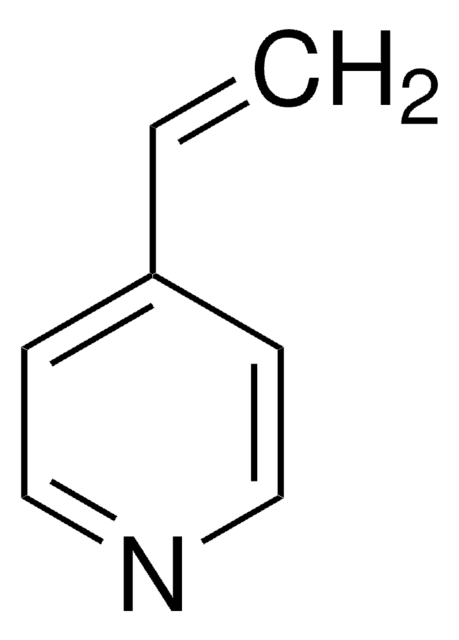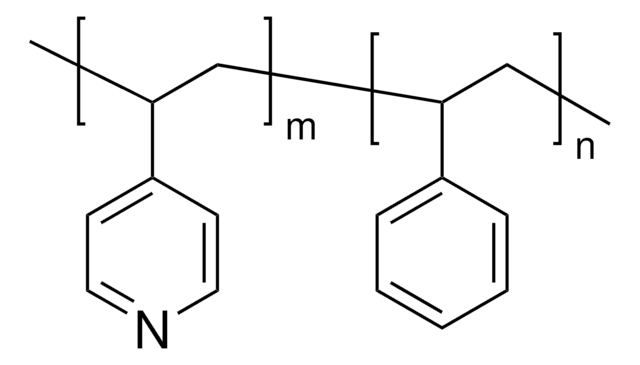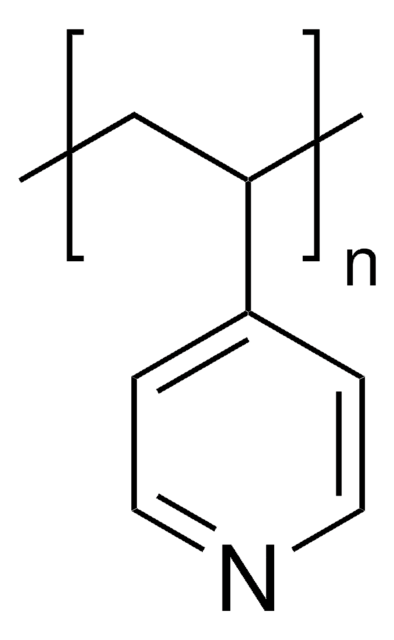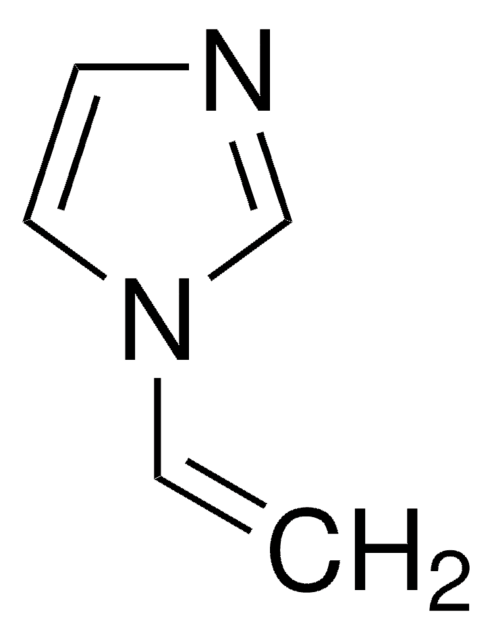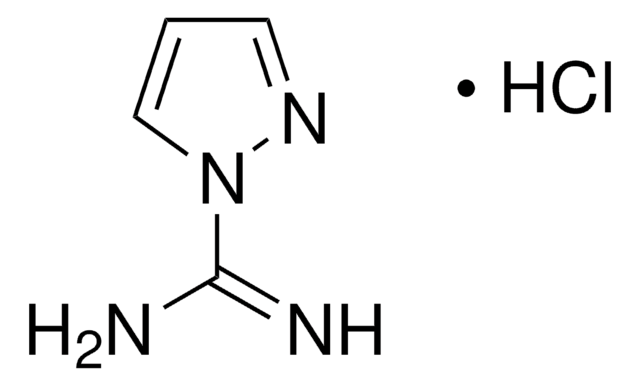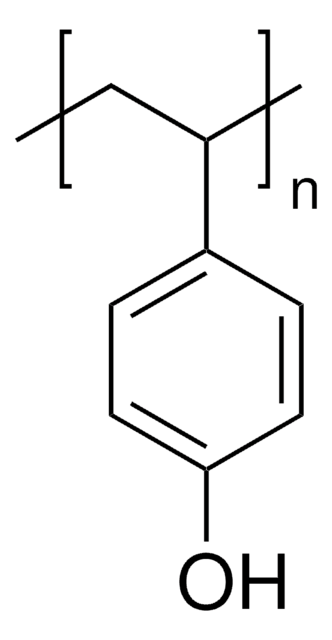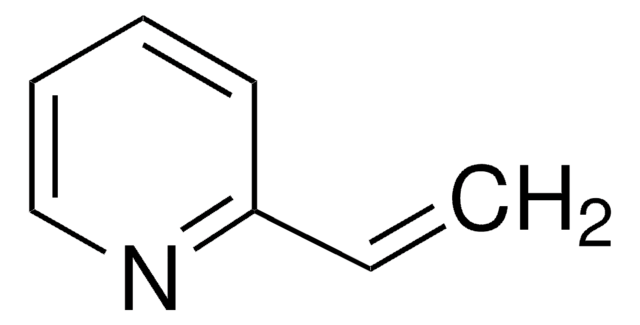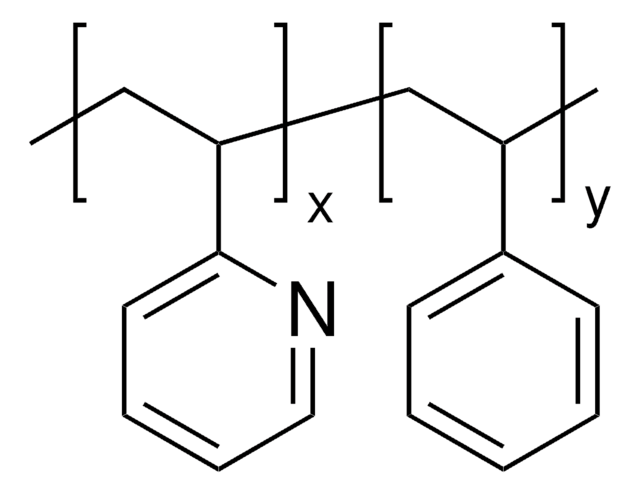472344
Poly(4-vinylpyridine)
average Mw ~60,000
Synonyme(s) :
4-Vinylpyridine homopolymer, 4-Vinylpyridine polymer, Poly(4-pyridylethylene), Poly(p -vinylpyridine)
About This Item
Produits recommandés
Poids mol.
average Mw ~60,000
Niveau de qualité
Température de transition
Tg 137 °C (onset, annealed)
Solubilité
DMF, acetic acid and lower alcohols: soluble
Chaîne SMILES
n1ccc(cc1)C=C
InChI
1S/C7H7N/c1-2-7-3-5-8-6-4-7/h2-6H,1H2
Clé InChI
KFDVPJUYSDEJTH-UHFFFAOYSA-N
Vous recherchez des produits similaires ? Visite Guide de comparaison des produits
Catégories apparentées
Description générale
Application
- fabrication of antibacterial surfaces
- development of pH sensitive systems
- 3D molecular level ordering systems
- anti-corrosive coatings
- dye sensitized solar cells (DSSCs)(90}
Code de la classe de stockage
11 - Combustible Solids
Classe de danger pour l'eau (WGK)
WGK 3
Point d'éclair (°F)
Not applicable
Point d'éclair (°C)
Not applicable
Équipement de protection individuelle
dust mask type N95 (US), Eyeshields, Gloves
Faites votre choix parmi les versions les plus récentes :
Déjà en possession de ce produit ?
Retrouvez la documentation relative aux produits que vous avez récemment achetés dans la Bibliothèque de documents.
Les clients ont également consulté
Global Trade Item Number
| Référence | GTIN |
|---|---|
| 472344-25G | 4061832360591 |
Notre équipe de scientifiques dispose d'une expérience dans tous les secteurs de la recherche, notamment en sciences de la vie, science des matériaux, synthèse chimique, chromatographie, analyse et dans de nombreux autres domaines..
Contacter notre Service technique
